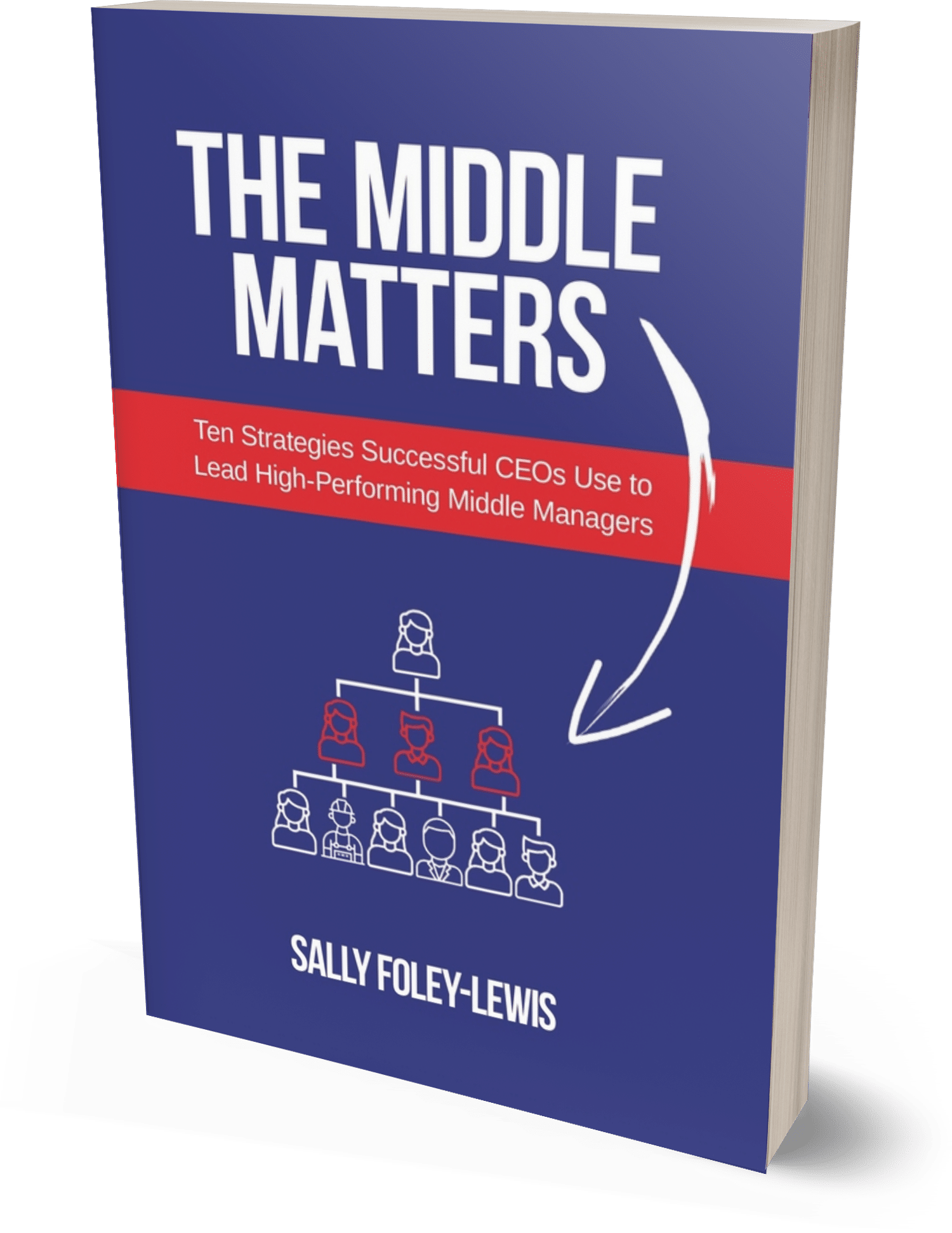The Middle Matters
Ten Strategies Successful CEOs Use to Lead High-Performing Middle Managers
Confident, productive and effective middle management matters.
As a CEO or senior executive, it’s not always easy or straightforward to bridge the leadership gap between your frontline and your senior ranks. If you relate to this, The Middle Matters is the book for you. Packed with proven practical strategies and techniques, the guide will help you build a strong and cohesive middle management team.
Because the middle matters…

The success of any organisation depends on the productivity and loyalty of its middle managers. In The Middle Matters, you’ll learn how to delegate responsibilities and empower your middle managers to drive results. Whether you’re a seasoned executive or just starting out, this book is filled with constructive tips and proven strategies to help you cultivate a culture of productivity and loyalty at all levels of your company.
The Middle Matters
We know Jan Brady as the annoying and sometimes maligned middle child of the American television sitcom family, The Brady Bunch. Jan often felt overshadowed by her popular and attractive older sister, Marcia, and struggled with insecurities about her appearance, her intelligence, and her ability to stand out in a family of six children. Jan’s whiny catchphrase, “Marcia, Marcia, Marcia”, has become a pop culture reference for someone who feels overlooked or eclipsed by others.
Despite her insecurities, Jan was actually a smart and creative individual who often came up with ideas or solutions to problems that the rest of the family hadn’t considered. She had a strong
sense of justice and fairness, and was quick to stand up for herself and others when she felt they had been treated unfairly.
Jan’s character was complex: at times she was rebellious, seeking attention and trying to differentiate herself from her sisters and stepbrothers. At other times she was caring and thoughtful, looking out for the needs and feelings of others.
Jan’s overall intention was to carve out her own identity and be recognised and valued for who she was, rather than live in the shadow of her sisters. Through her struggles and successes, Jan’s character provided relatable and entertaining plotlines that resemble those experienced by middle managers within organisations today—what we might call the Jan Brady effect.
Middle managers often see themselves as stuck in the middle too. Throughout my leadership development work over the last 20 years, many have shared with me that they have been given the heavy weight of responsibility that far outweighs the level of authority they have available to them to get things done. They therefore battle to be as effective as they envision they can be.
Like Jan, middle managers also struggle with differentiating themselves as they productively and efficiently lead their teams, and with stepping up and speaking up to provide timely and relevant information to support strategic decision-making.
Middle managers see themselves as the meat in the sandwich. And they don’t say this quite so positively or politely!
As I keenly sit and listen to the underlying desires and feelings of middle managers, it is undeniable that they want nothing but the best from and for their teams and the organisation. Like the complex character of Jan Brady, they too are silently searching and struggling for ways to continue to grow and develop, and become the best leader their team deserves.
This book is not just for CEOs—it’s for any executive or senior leader who is a leader of leaders.
Frontline employees, senior leaders, and middle managers all have critical roles to play in every organisation. This book focusses particularly on middle managers because they tend to be neglected when it comes to investing internally in leadership development, team building, and professional development. A one-size approach to these essentials does not fit all.
The fallout from COVID-19 has unexpectedly highlighted the significant impact middle managers have when it comes to engaging a scattered and shattered workforce. It has also highlighted the lack of professional development middle managers have typically received. They have needed to adjust their leadership, team engagement, and communication skills in stressful, unfamiliar circumstances, across various platforms, all while adjusting how they lead themselves and others through dramatic change.
At the same time, people are resigning, leaving middle managers to drive performance and strive to achieve personal and organ- isational goals with fewer people and fewer resources.
Thank you for picking up this book. Anticipating that you are busy, my wish for you is that this be a fast and practical read. More importantly, I trust that along the way you’ll find the presented strategies insightful and useful, and by the last page you’ll join me in my quest to acknowledge the very real value—in terms of time and money—of middle managers: #TheMiddleMatters.

